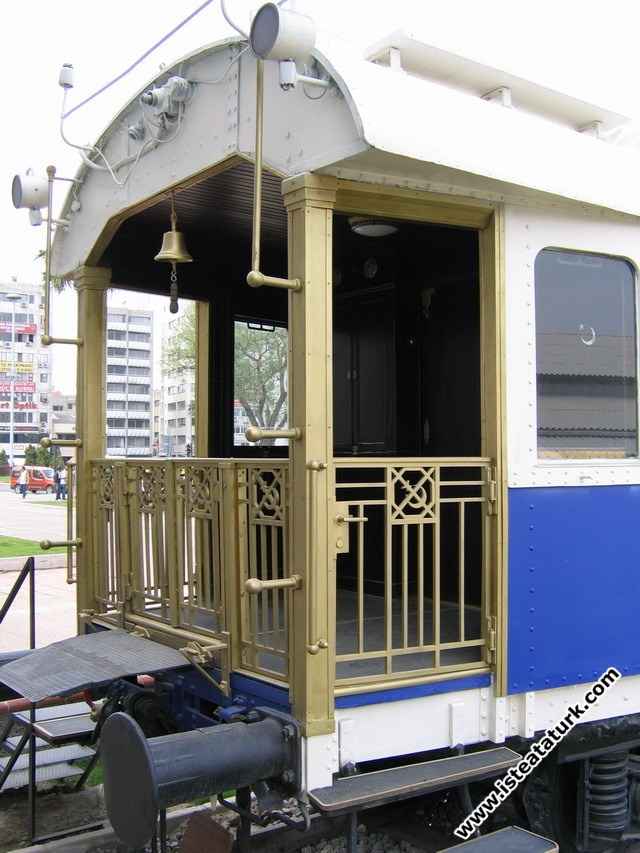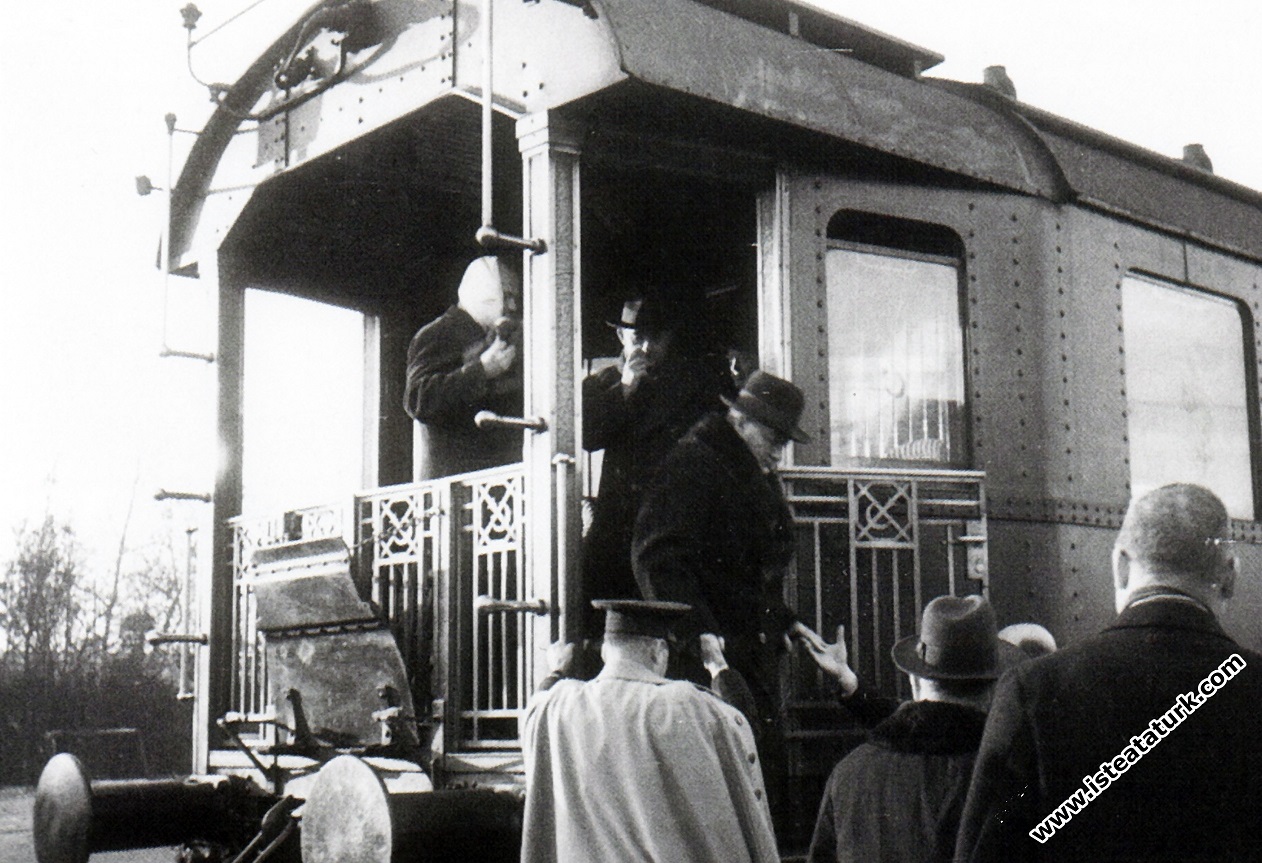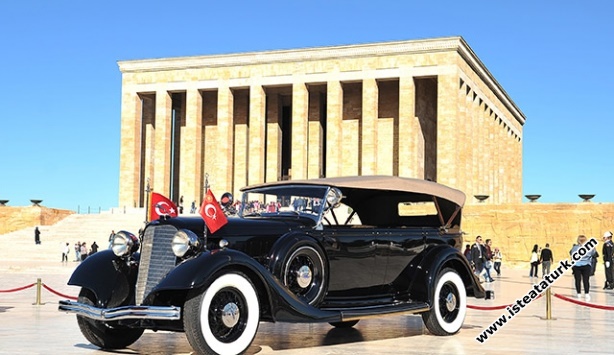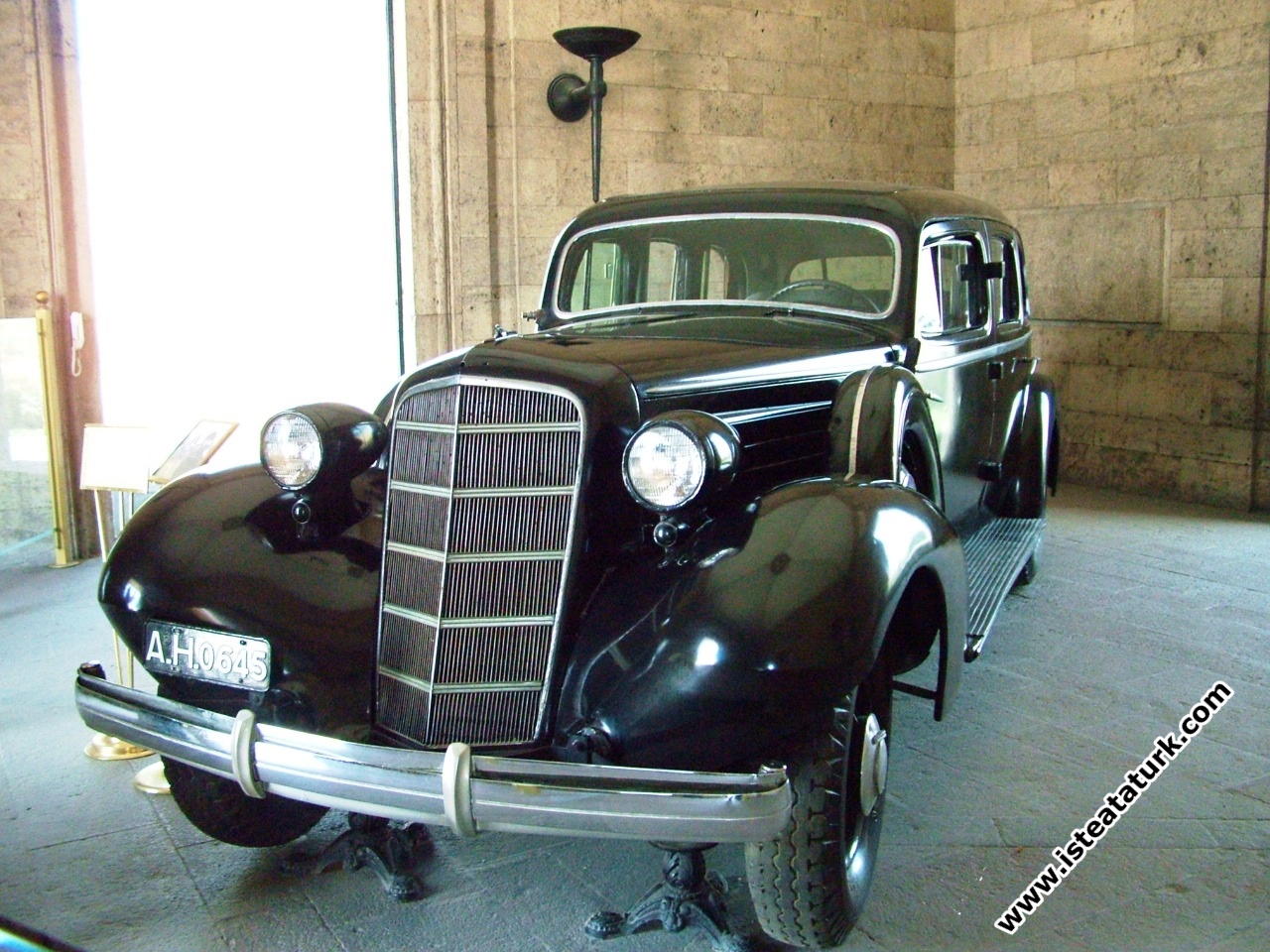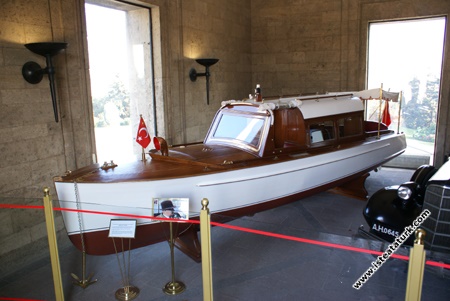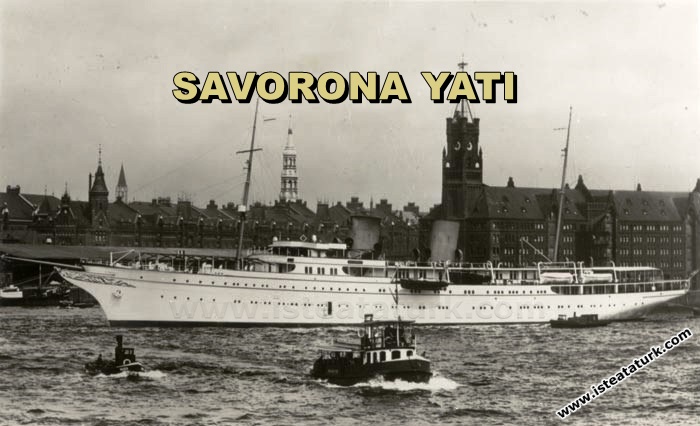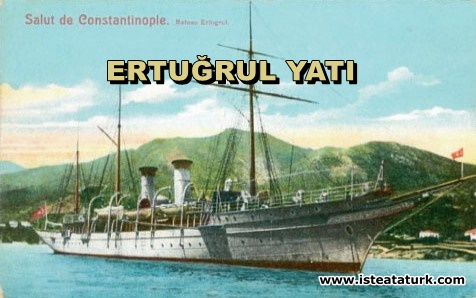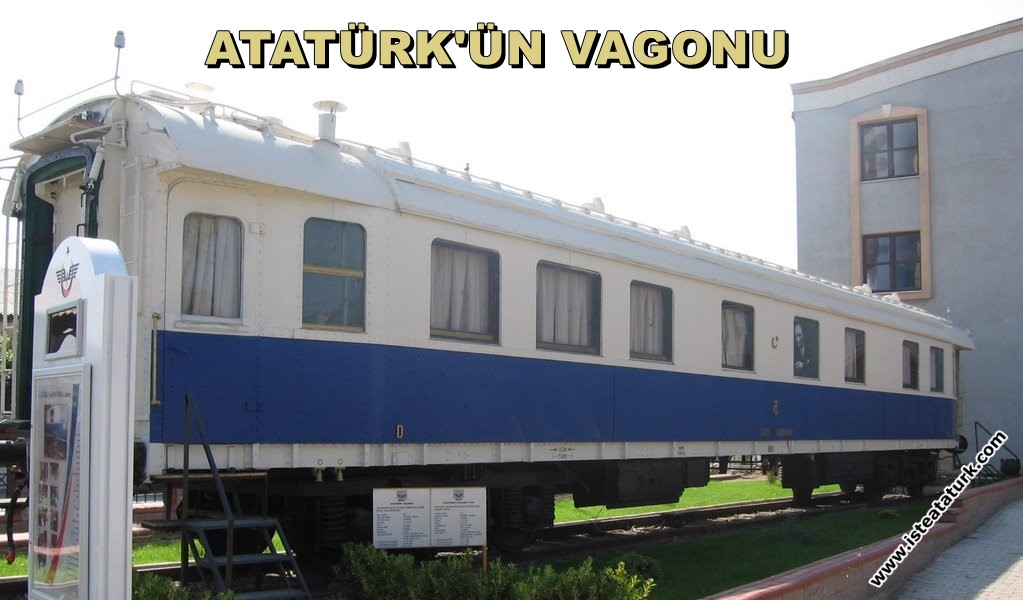
Atatürk's Wagon, White Train
Character Size
Atatürk's Wagon, White Train
The Wagon Used by Atatürk in his Country Trips, (White Train)
The wagon, which is the only original example of the White Train, used by Atatürk during his country tours (1935-1938); It has been exhibited since 1964 next to the "Atatürk House in the War of Independence and Railways Museum" in Ankara Garda. It was registered by the Ministry of Culture, General Directorate of Monuments and Museums in 1991 as "Atatürk's cultural property to be protected".
Technical specifications of the wagon:
Weight: 46.3 tons
Length: 14.8 m.
Manufacturer: LHV Linke Hofmann-Werke, Breslau, 1935
This wagon, which Atatürk used in all his country tours between 1935-1938, was also "home" in his last journey.
On Saturday, November 19, 1938, Atatürk's body was taken from Dolmabahçe Palace and placed in the Yavuz Battleship at Sarayburnu. It was ceremonially placed on the middle table in this wagon of the "White Train" waiting in Izmit. It was 20:23. Six torches were lit around the corpse, and six officers stood guard with their swords in a moment of silence. When the division band started the mourning anthem, at 20.32, it started to move towards Ankara, amid the tears of those gathered at the train station.
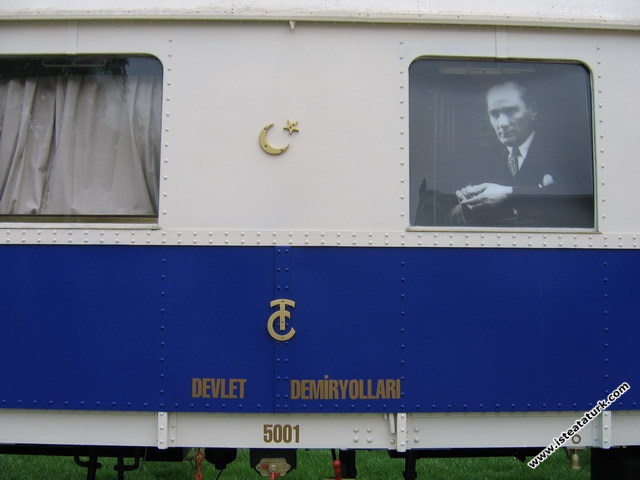
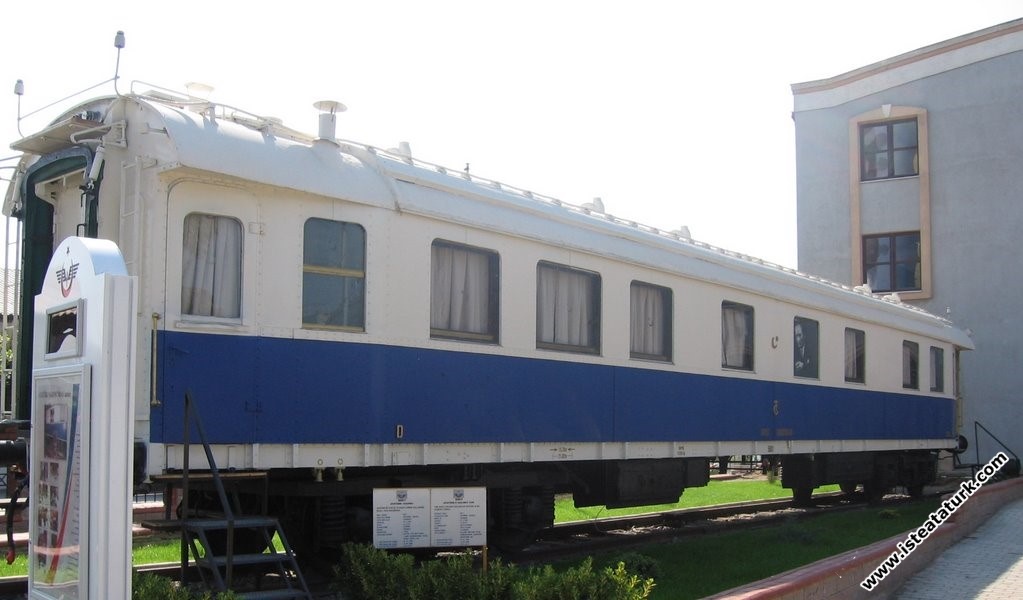
The train arrived in Ankara at 10:04 on Sunday, November 20, 1938. İnönü, deputies, soldiers, police, officers, students and the public were waiting at the station. Ata's coffin was taken from the window of the wagon at 10.26 and placed in the gun car waiting in front of the famous "Steering Wheel Building", where he directed the War of Independence, and he bid farewell to the nation he had founded and made his last journey with the "White Train".
Car;
1.Kitchen
2.Guard/Suite toilet
3.Guard/Suite Compartment
4. Women's compartment
5.Bathroom
6. Atatürk's bedroom
7.Hall
8. Rest consists of parts.
Source: www.tcdd.gov.tr
WHITE TRAIN
No detailed publication has been made so far on the nature of the composition of the White Train, which was built in Germany in 1935 for our great leader Atatürk to use in his domestic trips. We considered it a duty to present our memories of those beautiful days to the information of our esteemed railwaymen regarding the technical aspect of this train and its implementation.
The White Train consisted of 9 wagons. These are Atatürk's Dining and Sleeping Halls, a hall for the General Secretariat of the Presidency and the Chief Adjutant, with two Sleeper wagons for the invited dignitaries of the Government, a Restaurant, as well as two II. It consisted of a position and a carriage, and all of them had 4 axles.
The length of the first five of these halls was 21 meters, while the others were 19.6 meters. The wagon halls were naturally equipped with the most modern and technical facilities according to the conditions of the time. Each wagon was mounted on Görlitz system heavy bogies, equipped with Urdinger type bumpers, hand and air brakes.
At one end of Atatürk's bedroom, there was an anteroom in the form of a balcony. The windows of the training hall were kept very wide for a comfortable and panoramic view of the surroundings. Although there was a door for passage to the other wagons in the front, this passage was not articulated like the others. The stair steps of the wagon were foldable.
The interior walls of the hall were covered with Caucasian walnut, and the ceilings were covered with light ebony wood. In addition, the hall contained an ebony-covered table, a large epengle-covered armchair, and other smaller armchairs. Window curtains were made of yellow and red cross-striped (Akilla) taffeta. In the living room there was a radio, two electrical outlets, three ringing senses, and a telephone.
In the adjoining bedroom section, a large bed was covered with moire pink roses on the walls, and the ceilings were covered with ebony. Again, there was a dressing table and armchairs that could be used as a writing desk when closed and had a mirror when opened. All metal parts were nickel plated.
The ventilation of the wagon (Wendler) worked with the air intake device. Although the wagon was connected to the sofa system of the train, it was also equipped to be heated with a hot water boiler. The electrical equipment was provided with two accumulators and dynamos, and there were wooden blinds with special gas covers in front of the windows to prevent flies and similar insects from entering.
The dining hall was 8 meters long. There was also a wardrobe room, two half and full compartments, and toilets. The wall was made of palisander, the ceiling was made of ebony, the wall of the wardrobe was made of oak, the wall of the four-person compartment was made of mahogany, the walls in the small compartment were made of drape-mahogany, the entrance was painted milk white.
When fully opened, there was a large dining table 5 meters long, two large armchairs, surrounded by 16 small armchairs covered in blue leather, where there was also a speaker for the radio. In one corner of the living room, there was a buffet suitable for furniture, the equipment was the same as that of the bedroom.
There were 4 sofas, nightstands and similar auxiliary staff compartments, toilets and washing areas, as well as a kitchen and cellar in the chief aide and secretary carriage to be used instead of beds. There was also a refrigerator in the cellar, separate from the shelves. The wagon contained compartments with washbasins, offices, and also a small saloon.
One of the other wagons had a small saloon, and the others had sleeper compartments. The dining room was in two parts. Next to the kitchen, there were four tables for three and four people, a row for two in the large dining room and tables for 24 people for four each. The next two wagons had 8 leather-covered compartments. Two sofas in each compartment formed four bunks when their backs were removed at night. These wagons, which also had toilets, were heated with sofas just like in the furniture. All the wagons were painted dark navy blue along the bottom row, and white up to the outer ceiling. Some wagons had radio antenna wires on their roofs.
Ankara personnel on the White Train departing from Ankara, and Haydarpaşa personnel on departure from Haydarpaşa, would be taken to wherever they went in the country, the same personnel would return, only the machines would change for coal stock and maintenance in the warehouse centers. These trains would definitely be profitable, sometimes there would be a special train sent from the front as a pilot. All of the train's personnel are experienced, carefully selected from those whose successes have been tried, the clothes are clean and ironed, I remember very well that the Machinists in their locomotives worked with white gloves when entering the Stations...
These coal-fired locomotives were very clean, well-maintained, with sparkling yellow metal parts, they mostly used Traction Inspectors in their regions, and the control staff did not get off the marquise. In the carriages of these trains, V, I and II Inspectors and Telegraph and Telephone Surveillance with all their materials were present, and the repair teams would not take their bags off their backs. The General Order no. 501 was applied in the voyage of the train, the sealed candles of the envelopes with the secret stamp of that month hidden in the safes of the Stations and Stations were opened by removing the sealed wax, the password was learned, those who knew the password were brought closer to the train, the Branch Chiefs carried red armbands on their left arms.
Again, these trains were accompanied by Road Section and Branch Chiefs, Train Inspection Officers, Section Physicians, Chief Inspectors of active services, and mobile telegraph and telephone boxes were kept ready at their disposal. The stations were cleaned with special care a few days in advance, the people of the surrounding villages, with their luxury lamps in their hands, gathered at the station platforms with the hope and excitement of seeing Atatürk. For security reasons, the lines and crossings were kept under control by the local Gendarmerie and the police in the cities.
Governors, District Governors, District Managers and Commanders, Mayors, and similar establishment managers in the cities, towns and sub-districts where the train will stop for that day, greet the train with their brand new clothes made of jacket, frock, redingot or black smoked fabric, rubber pants, Station buildings with flags, and navy lanterns at night. If Atatürk was going to land in that city, various decorated triumphal arches were made on the main roads and crossroads, the news of Atatürk's coming would cause a happy and enthusiastic joy in everyone.
Another feature of that period is; It was the discovery of the Medal of Independence with a red ribbon on the chests of many, from the governor to the commander, to the most modest peasant, who were proud to have participated in the War of Independence under the command of ATATÜRK. Nowadays, they appear infrequently at ceremonies on national days, as these individuals have dwindled over time.
Atatürk made his last tour trips in our country, directly to the Eastern Provinces, first with the White Train, which departed from Ankara on 12.11.1937 at 17:50, to Kayseri - Sivas - Diyarbakır - Elazığ - Malatya - Adana and Mersin, and from there to Konya. They went to Afyon at night, stayed here for an hour, and returned to Ankara via Eskişehir on 21.11.1937 at 23:30...
Source: Written by: A. Lütfi Balamir, (Retired TCDD Inspector)
